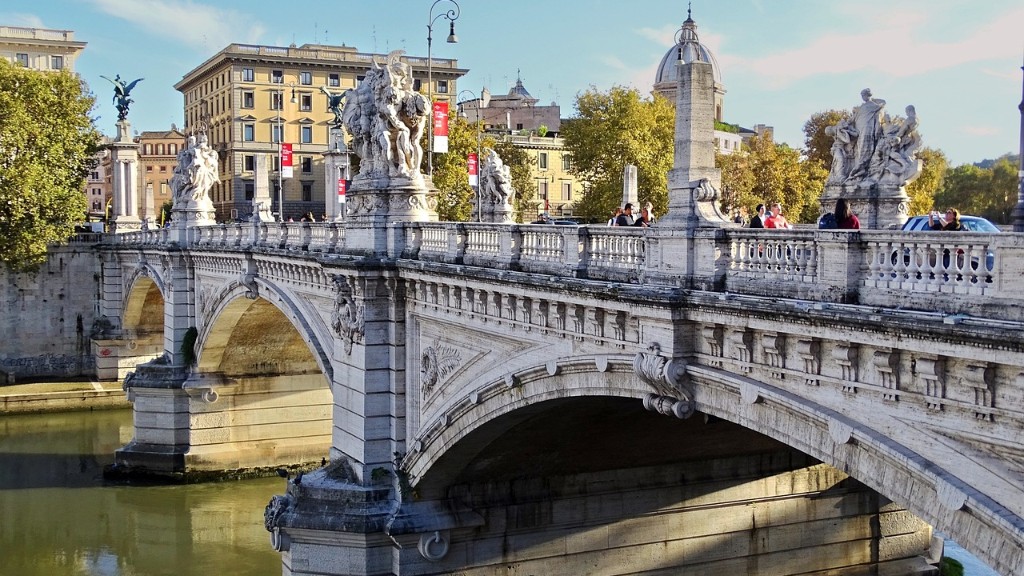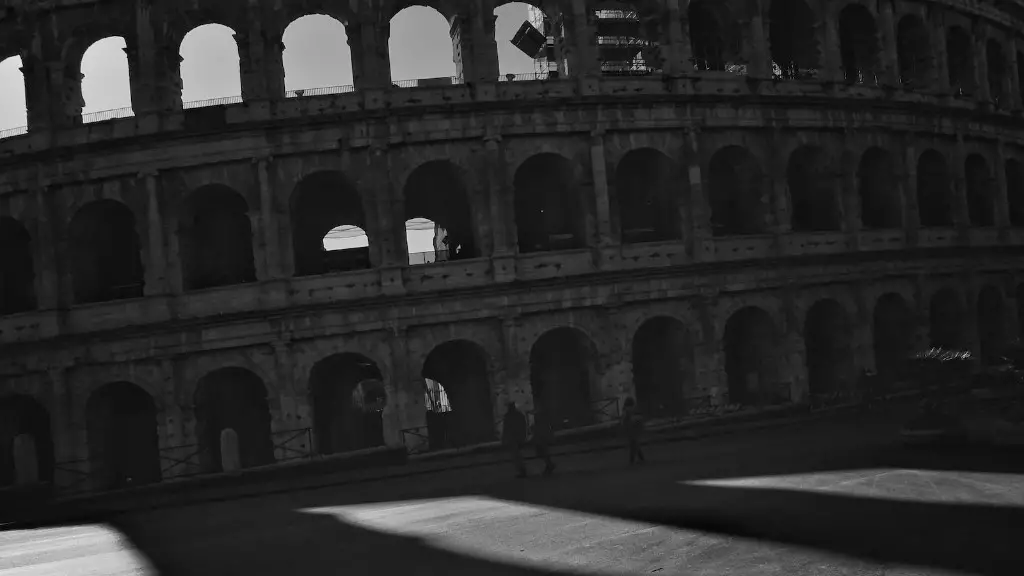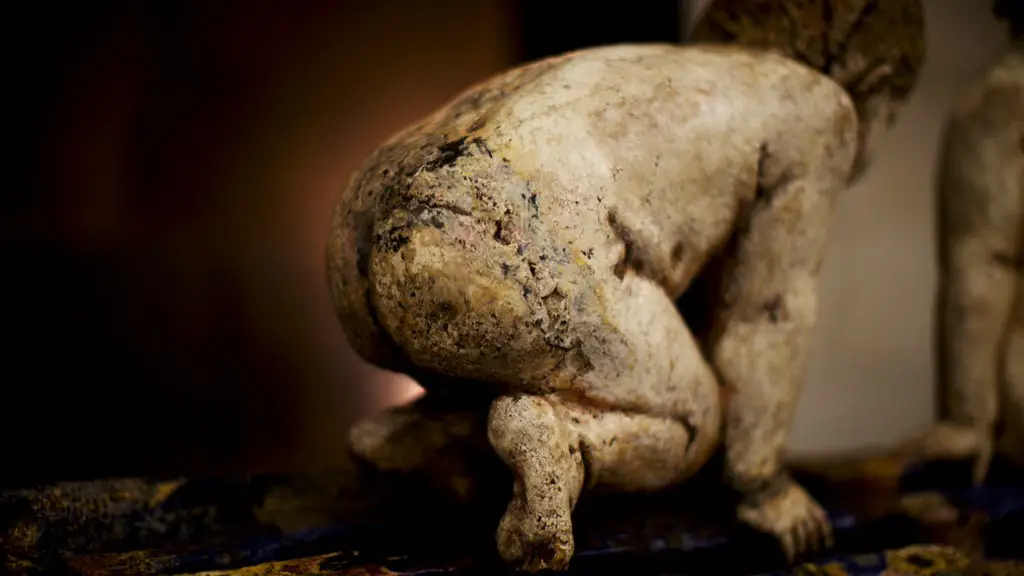Ancient Rome was one of the most powerful and renowned civilizations of its time. Located near the Tiber River, it was founded on the Palatine Hill with animals grazing on the grass and farmers trading fruits and vegetables. That great city was the beginning of an empire that would stand for hundreds of years and ultimately become the centre of the world.
The Tiber River was essential for the prosperity and growth of Ancient Rome. This river provides several geographical benefits like water for drinking, bathing and irrigation. It was also used for trade and transportation, allowing Rome’s goods to access distant markets. In addition, the shallow depth of this river provided a means of defence from enemies outside the city walls. Instead of attacking the city walls, Rome’s enemies could be held back by the Tiber.
Historian Paul Strack believes that the Tiber was an important aspect of Ancient Rome’s success. He claims that the river was key to Rome’s ability to expand, as it provided a direct access to the Mediterranean Sea. With access to the sea, Rome was able to expand its trade network and bring in much-needed resources. Without the Tiber’s support, Rome could have been limited to its land-locked area.
Furthermore, geographer David Blanchon claims that the Tiber represents “the point of convergence between political and economic forces”. In other words, the Tiber was essential to Rome’s power, as it was the center point of politics and economics. With the river serving as an outlet for Rome’s political and economic power, it was able to conquer many lands and control large territories.
The Tiber has also had a great impact on the modern world. The establishment of Ancient Rome is still seen as the dawn of Western civilization, and its influence on the world is undeniable. However, this would never have been possible without the role of the Tiber River. Without it, there would be no Ancient Rome to set the foundations for the world we know today.
The Impact on Environment
The Tiber River had a profound impact on the environment of Ancient Rome. The first major impact was the water pollution from urban development. As Rome grew, it used its waste such as animal remains, dead bodies and industrial runoff, which caused severe contamination of the water. In addition, the construction of Roman ships and warships also took a toll on the environment as the dead wood and animal hides used to construct these ships had to be taken from the environment.
In order to reduce the impact of these activities, the Roman Senate passed several laws to improve the quality of water in the Tiber. The Senate also issued many orders to reduce the amount of waste being dumped into the river and some areas along the Tiber were closed off to ensure that the river could continue to serve its purpose effectively.
However, the Roman Senate was not able to prevent all of the damage to the environment. Although their efforts helped to reduce the impact of human activities, the Tiber still suffered from human exploitation. This led to deforestation and loss of habitat along the river bank, as well as destruction of the natural flora and fauna.
The environmental impact of the Tiber River extended beyond Ancient Rome. After the fall of the Roman Empire, the river continued to suffer from human activities. The river was still used for transportation, but the destruction of the surrounding wildlife and vegetation accelerated without proper oversight and management. This destruction is still felt today, as the Tiber is a drastically different river to the one that witnessed the rise of Ancient Rome.
The Impact on Society
The Tiber River had a profound effect on the people of Ancient Rome. As the river provided a route of transportation, it was used to facilitate trade and communication. This allowed traders to bring in goods from all over the Mediterranean, giving rise to a multicultural society and international relations.
The Tiber also provided an essential source of water for the people of Ancient Rome. Although the quality of the water was poor, it was still an important asset for a city of its size. Moreover, the river was also used for religious ceremonies and wars, as well as performances and sport activities. This demonstrates the importance of the Tiber in the everyday life of Romans.
Furthermore, the Tiber River was essential for the political system of Ancient Rome. Since the river provided access to the sea, it played an important role in the expansion of the Roman Empire. The river was also seen as a symbol of Roman power, as the Roman legions crossed it without fear of failure. It is this symbolism that allowed Ancient Rome to become the great civilisation we know today.
Finally, the Tiber River allowed the people of Ancient Rome to explore and expand its culture. People travelled along the river and exchanged ideas, stories and customs, allowing a multidimensional cultural legacy to be formed. This legacy was essential in the development of European civilisation.
Conclusion
The Tiber River had a powerful impact on the development of Ancient Rome. This river provided several geographical benefits, allowing Rome to expand its influence and control large territories. It also served as a route of transportation, supporting the city’s economy and providing access to international markets. However, the Tiber also had an environmental impact, as well as a deep effect on the people of Rome. Ultimately, the Tiber River had an important role in the development of Ancient Rome and its legacy is still felt today.
Other Rivers Located Near Rome
Other than the Tiber River, Ancient Rome was located near several other important rivers. The Trerus River was the most important river during the time of the Roman Republic, as this river serves Rome’s main port of Ostia. The Almo River was also an important river in Ancient Rome, as this river served as Rome’s main waterway southeast of the city.
The Anio River is a lesser-known river located near Ancient Rome. This river served as a secondary waterway for the Roman Empire, providing access to the Tuscan sea. This river was essential for trade and transportation, as it allowed Rome to access goods from the east. Finally, the Teverone River is an important river located in the vicinity of Rome. This river is important for its historical significance, as this is the river where Julius Caesar was assassinated in 44 BC.
Influence of Rivers on Ancient Rome
The rivers located near Ancient Rome had a great impact on the city’s growth and development. The Tiber River was essential for Rome’s expansion, as it provided a route of transportation and access to distant markets. In addition, the Tiber also had a great impact on Rome’s political system, as it served as a symbol of power. Other rivers like the Trerus and Almo Rivers were important for trade and transportation.
The rivers located near Ancient Rome also had an environmental impact. The intense urbanization and expansion of the city of Rome had a devastating effect on the surrounding environment. The Tiber River was severely contaminated due to the dumping of waste and industrial runoff. However, the Roman Senate did their best to reduce the impact by issuing several laws.
Finally, the rivers located near Ancient Rome had a great effect on the people of the city. These rivers allowed people to trade, explore and expand their culture. Furthermore, the rivers served as a source of water, even though the quality of the water was degraded. Without these rivers, Ancient Rome would have never achieved greatness.
Legacy of the Rivers
The legacy of the rivers located near Ancient Rome continues to this day. While some of the rivers have been severely degraded due to human activities, their legacy is still felt. The Tiber River remains an important transport route, while other rivers like the Anio River and Teverone River serve as historical markers. In addition, the Trerus River still serves Rome’s port of Ostia.
The legacy of the rivers located near Ancient Rome also extends beyond their practical uses. These rivers were also important in setting the foundations of Western civilisation. Without access to the Mediterranean Sea, Rome would never have been able to expand its influence and power. Therefore, the rivers located near Ancient Rome are essential to understanding the legacy and importance of this great civilisation.





